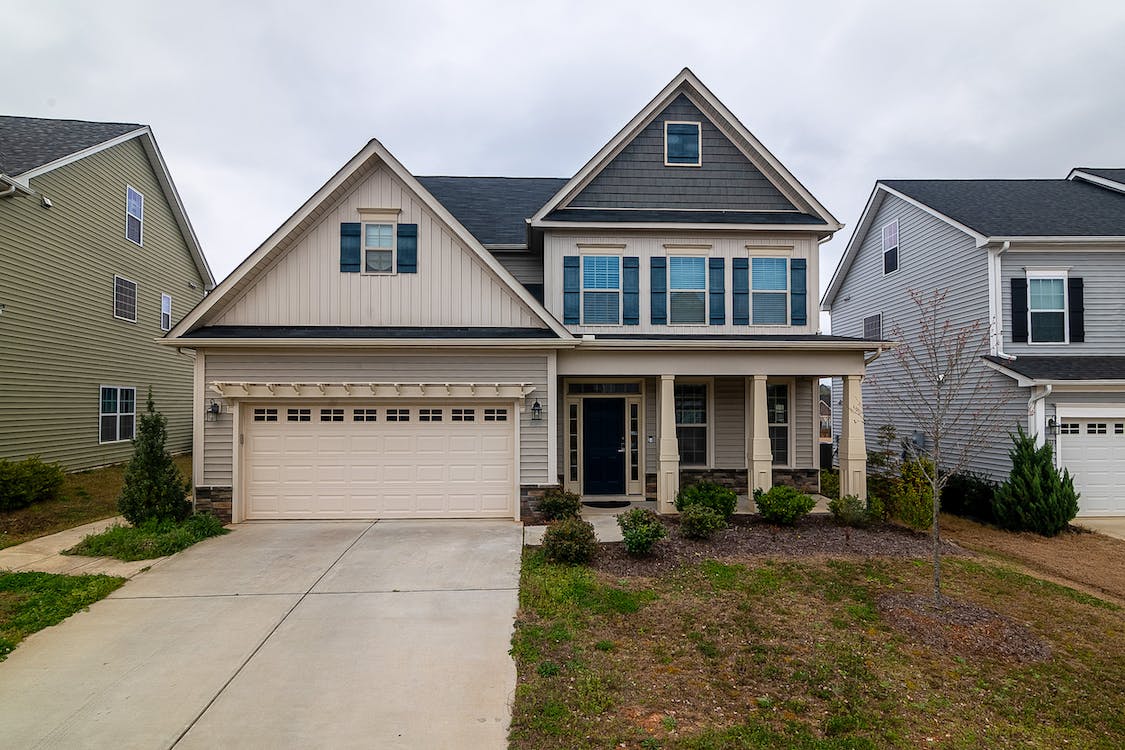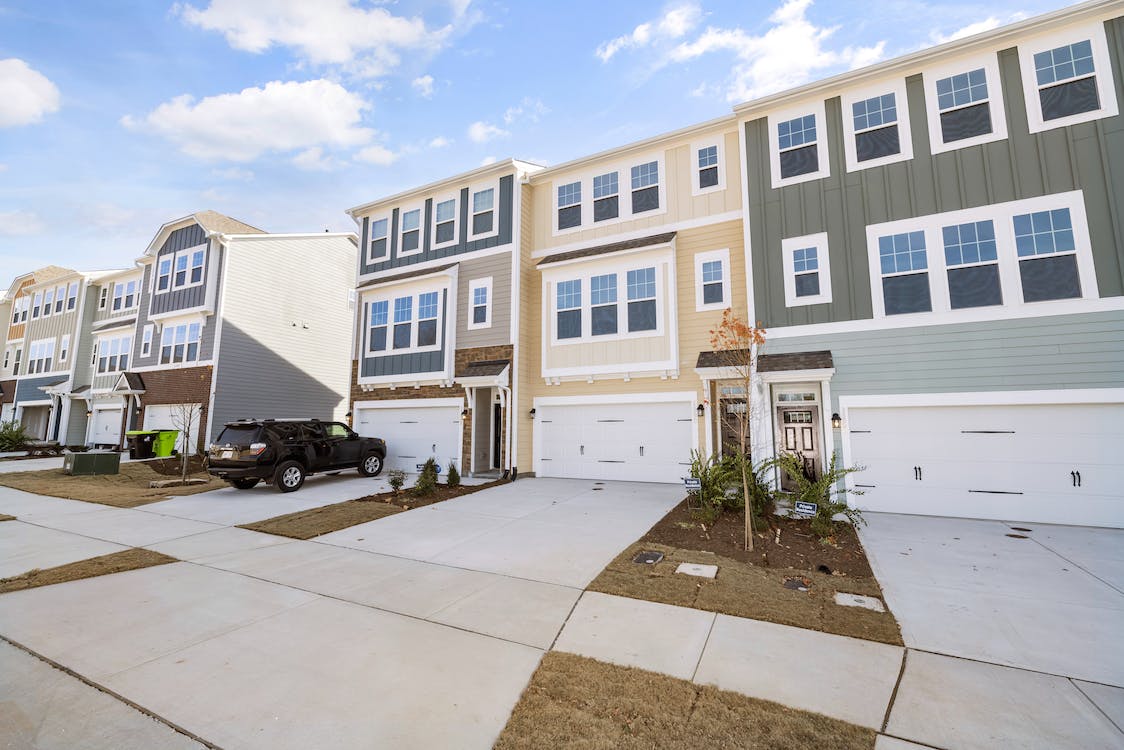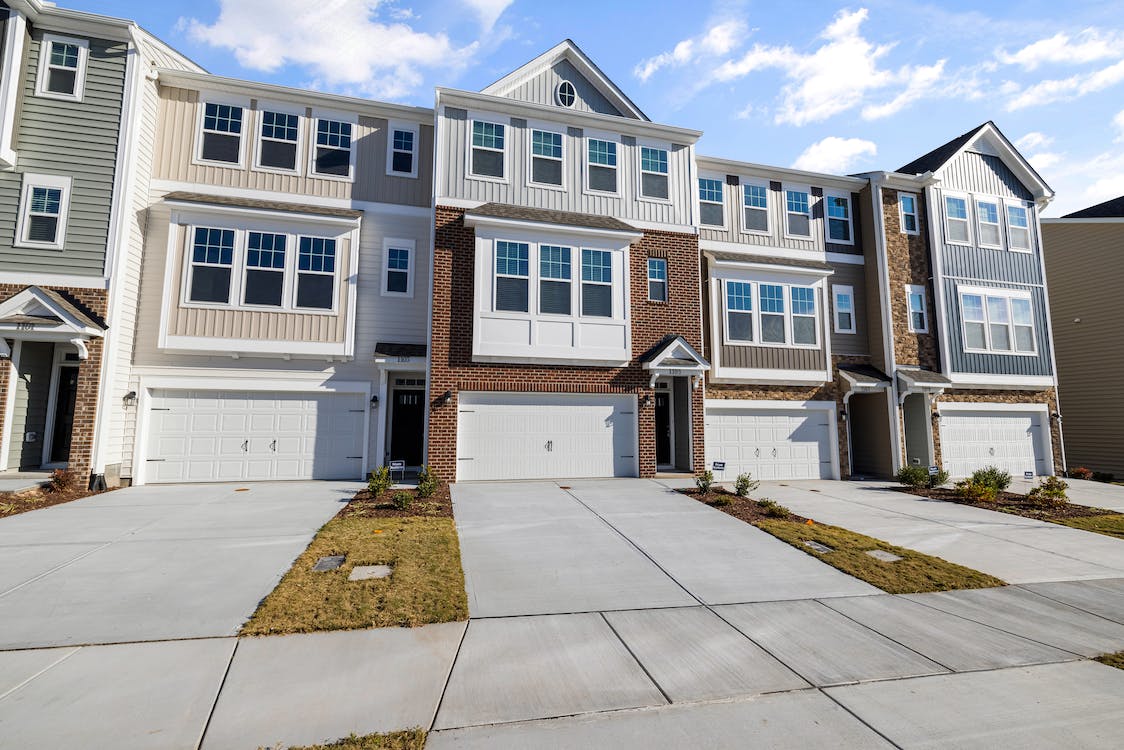Investing in Multifamily Real Estate: The Ultimate Guide

Real estate has long been regarded as a lucrative investment opportunity due to its potential for appreciation, cash flow generation and diversification benefits. However, getting started in residential or commercial real estate investing can seem a little daunting for many people due to the financial requirements.
If you're just getting into real estate investment, multifamily real estate can be a great starting point as this type of investment can help you grow your investment portfolio and earn passive income.
Before you start investing, it is very important that you understand the advantages and disadvantages of this type of investing so you can make informed decisions and maximize your investment potential.
Key Takeaways
- A multifamily property, also known as a multi-unit residential property, refers to a building or structure that contains multiple separate housing units intended for residential purposes.
- The two main types of residential real estate are single-family homes and multi-family homes Other types of residential real estate include condos, apartments and townhouses
- If you're a real estate investor considering getting into multifamily real estate investing, some of the things to consider include the location of the property, the overall condition of the property, rental income potential, financing options and property management
- Some pros of investing in multifamily real estate include: Potential for steady cash flow, potential for long-term appreciation and portfolio diversification
- Some cons include: Higher initial investment, risk of tenant turnover and vacancies and financing challenges
- Before getting started in multifamily real estate investing, consult a qualified financial advisor and real estate professional so that they can help you navigate the complexities of multifamily real estate investing
Disclaimer
The contents of this article are for educational purposes only. They are not intended to be a source of professional financial advice. You will find experts on financial planning, financial management, and real estate here. More on disclaimers here.
What is a Multifamily Property?

A multifamily property, also known as a multi-unit residential property, refers to a building or structure that contains multiple separate housing units intended for residential purposes. It is designed to accommodate and house multiple families or individuals within a single property. Multifamily properties can come in various forms including apartment buildings, condominium complexes, townhouses, duplexes, triplexes and quadplexes.
The distinguishing feature of a multifamily property is the presence of multiple self-contained units within a single building or complex. Each unit typically has its own entrance, living space, kitchen and bathroom facilities, providing separate living spaces for the occupants. To distinguish residential and commercial property as an investor, consider this; any property that has 2-4 units is classified as a residential property, while properties that have five or more units are considered as commercial property.
Types of Residential Real Estate

Residential real estate refers to properties that are designed and used primarily for residential purposes. When it comes to residential real estate, the two main types of investment property that real estate investors can put their money into: Single-family and multi-family homes.
Single-Family Homes

These are standalone properties designed to accommodate a single family or household. Single-family homes offer privacy, space and often come with a yard or outdoor area.
Multi-family Homes

A multi-family home is a residential building that consists of multiple self-contained living units. Unlike single-family homes, which are designed for a single household, multi-family homes are built to accommodate multiple families or tenants.
Other types of residential real estate include:
Condominiums
Condominiums also known as condos are individually owned units within a larger complex or building. Owners have ownership of their individual units and share ownership of common areas and amenities with other condo owners.
Apartments
Apartments are units within a larger building that are typically rented out to tenants. They offer a range of sizes and configurations, and tenants pay rent to the property owner or management company.
Townhouses
Townhouses are multi-level properties that share one or two walls with neighboring units. They offer a combination of single-family home features and the convenience of a shared community.
Duplexes and Triplexes
These are residential buildings divided into two or three units, respectively. Each unit is typically self-contained and can be rented out separately.
Manufactured/Mobile Homes
These homes are prefabricated structures built in a factory and transported to a specific location. They can be placed on leased land or within mobile home communities.
Vacation Homes
Vacation homes are properties used as a secondary residence for recreational purposes. They are typically located in desirable vacation destinations and can be rented out when not in use by the owner.
Cooperative Housing
In cooperative housing, residents own shares in a corporation that owns the entire property. Each shareholder has the right to occupy a specific unit within the property.
Things to Consider When Investing in Multifamily Real Estate

Before you get into multifamily real estate investing, here are several key factors to consider.
Location
The location of a multifamily property is crucial. Look for properties in desirable neighborhoods with amenities, good school districts, access to transportation and low crime rates. Owning multifamily investments in prime locations can attract quality tenants and ensure a steady demand for rental units.
Property Condition
Assess the overall condition of the property, including the units, common areas and exterior. Look for signs of deferred maintenance, structural issues or costly repairs that may impact your investment. Consider getting a professional inspection to uncover any hidden problems.
Income Potential
Evaluate the rental income potential of the property. Research local rental market trends to determine if the property's rental rates are competitive. Consider factors such as occupancy rates, rental demand and potential for rental growth.
Expenses and Cash Flow
Analyze the property's expenses including property taxes, insurance, utilities, maintenance costs and hiring a property manager. Ensure that the rental income generated can cover these expenses and provide positive cash flow. Carefully review historical financial records, such as rent rolls and operating statements, to assess the property's financial performance.
Tenant Quality and Lease Terms
Look into the current tenant profile, their payment history and lease terms. Look for properties with tenants who have a good track record of paying rent on time. Evaluate the lease terms to ensure they are reasonable and in line with market standards. Consider the potential for turnover and vacancy rates.
Financing Options and Interest Rate
Explore the financing options available for the multifamily property as well as research the current interest rates and lending requirements. Consider the loan terms, down payment requirements and the impact of financing costs on your investment returns.
Property Management
Consider the management of the property and determine if you will manage it yourself or hire a professional property management company. Assess the costs and responsibilities associated with property management and ensure that the property's financials account for these expenses.
Market and Economic Factors
Evaluate the local market conditions and economic trends. Look for signs of population growth, job opportunities and economic stability in the area. Consider how these factors may impact the rental demand and property values in the long term.
Regulatory and Legal Considerations
Familiarize yourself with local regulations, zoning laws and landlord-tenant laws. Ensure compliance with all legal requirements, permits and licenses. Consult with legal professionals to understand your rights and responsibilities as a property owner.
Future Potential and Exit Strategy
Assess the potential for future appreciation and growth in the property's value. Consider the market dynamics and development plans in the area. Additionally, have an exit strategy in place, whether it's selling the property, refinancing or holding it for long-term cash flow.
Pros and Cons of Investing in Multifamily Property
Investing in multifamily properties can offer various advantages and disadvantages. Here are some pros and cons to consider:
Pros
Cash Flow Potential. Multifamily properties have the potential to generate substantial and consistent rental income. With multiple units, the combined rent from tenants can provide a steady cash flow stream, covering expenses and providing a profit.
Economy of Scale. Managing multiple units within a single property offers economies of scale. It can be more efficient and cost-effective compared to managing multiple individual properties. Consolidating maintenance, repairs and property management tasks can reduce expenses and streamline operations.
Diversification. Multifamily properties provide diversification within a single investment. With multiple rental properties and tenants, you can spread the risk across different income streams. If one unit becomes vacant or experiences issues, the impact on overall cash flow is minimized.
Potential for Appreciation. Multifamily properties have the potential for long-term appreciation. As property values increase over time, your investment can grow in value. Strong demand for rental housing and the ability to increase rental rates can contribute to property appreciation.
Professional Property Management. Managing multifamily properties often involves hiring professional property management. They handle tenant screening, rent collection, maintenance and day-to-day operations. Outsourcing these tasks can save time, reduce stress and ensure efficient management.
Cons
Higher initial investment. Compared to single-family properties, multifamily properties generally require a higher initial investment. Down payments, closing costs and financing requirements can be more substantial. This can limit accessibility for some investors.
Property management challenges. Managing multifamily properties can be more complex than managing single-family properties. Dealing with multiple tenants, turnover and coordinating maintenance can be demanding. Effective property management is crucial for success.
Market Risks. Multifamily property values and rental rates are influenced by market conditions. Economic downturns, oversupply in the rental market or changes in local demographics can impact demand and rental income. Market risks should be carefully assessed.
Tenant turnover and vacancies. Multifamily properties are subject to tenant turnover and vacancies. Extended vacancies or high turnover rates can impact cash flow and require efforts to attract and retain tenants. Proper tenant screening and management strategies are important.
Financing Challenges. Financing multifamily properties can be more complex and restrictive compared to single-family properties. Lenders may require larger down payments, stricter underwriting and have specific criteria for multifamily loans.
Regulatory Compliance. Multifamily properties are subject to various regulations and compliance requirements. Landlord-tenant laws, building codes, zoning regulations and fair housing laws must be adhered to. Staying compliant and handling legal obligations can be demanding.
Single Family vs Multifamily Investing

When it comes to real estate investing, there are two primary options: single-family investing and multifamily investing. Each approach has its own set of advantages and considerations. Here's a comparison between single-family and multifamily investing:
Benefits of Single-Family Investing
Lower Initial Investment
Single-family properties generally require a lower initial investment compared to multifamily properties. This makes them more accessible for investors with limited capital.
Easier Management
Managing a single-family property is often simpler compared to multifamily properties. There is only one tenant, fewer maintenance issues, and less complexity in property management.
Appreciation Potential
Single-family homes can experience appreciation in value over time, especially in desirable neighborhoods. Homeownership demand can contribute to long-term value growth.
Tenant Stability
Single-family properties tend to attract long-term tenants, such as families or individuals seeking stability. This can result in lower tenant turnover and reduced vacancy risks.
Benefits of Multifamily Investing
Economies of Scale
Multifamily properties offer economies of scale. By having multiple units under one roof, investors can spread costs and maximize efficiency in property management, maintenance, and operations.
Cash Flow Potential
The cash flow potential is typically higher with multifamily properties. The combined rental income from multiple units can generate stronger cash flow compared to a single-family property.
Diversification
With multiple units, multifamily investing provides built-in diversification. If one unit is vacant or experiences a problem, the impact on overall cash flow is mitigated by the other units.
Professional Property Management
Multifamily properties often warrant professional property management due to their scale. This can alleviate the burden of day-to-day management tasks and ensure efficient operations.
Financing Opportunities
Financing options for multifamily properties can be more favorable than for single-family properties. Lenders may offer specialized multifamily loans with attractive terms and interest rates.
10 Top Markets to Invest in Multifamily Real Estate

As a real estate investor, here are some top markets that you should look into if you're interested in investing in multifamily real estate.
- Los Angeles, CA
- Austin, TX
- Las Vegas, NV
- Dallas, TX.
- New York City, NY
- Raleigh, NC
- Portland, OR
- San Francisco, CA
- Seattle-Tacoma, WA
- Boston, MA
Should You Invest in Multifamily Real Estate?
Deciding whether to invest in multifamily real estate requires careful consideration of various factors. Multifamily properties can offer attractive benefits, including potential rental income, diversification and long-term wealth building. However, they also come with risks and responsibilities that need to be managed effectively.
Conducting thorough market research and evaluating your financial capabilities are crucial steps in making an informed decision. Additionally, seeking guidance from a qualified financial advisor and real estate professional so that they can provide valuable insights and help you navigate the complexities of multifamily real estate investing.
By weighing the pros and cons and aligning the investment with your goals, you can determine whether investing in multifamily real estate is the right choice for you.
Bay Street Capital Holdings

Bay Street Capital Holdings is a Black-owned independent investment advisory, wealth management and financial planning firm headquartered in Palo Alto, CA. The firm manages portfolios with the goal of maintaining and increasing total assets and income with a high priority on managing total risk and volatility.
Bay Street was founded by William Huston after 13 years of supporting the United States' largest retirement plan ($650B) Thrift Savings Plan. In 2021, he was recognized as Investopedia’s Top 100 Financial Advisors for 2021. In California, only two Black-owned firms out of nineteen firms received this recognition.
In 2021, Bay Street was selected as a finalist out of over 900 firms across the US in the category of Asset Manager for Corporate Social Responsibility (CSR). Bay Street was founded to advocate for diverse and emerging fund managers and entrepreneurs.
Sources
https://www.fortunebuilders.com/multifamily-investment-property/
https://www.crowdstreet.com/resources/topics/investing/multifamily
https://trionproperties.com/news-and-articles/pros-and-cons-of-investing-in-multi-family-properties/





















